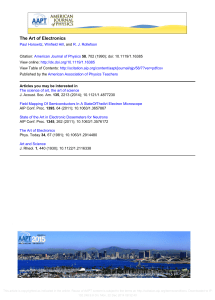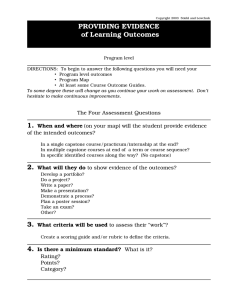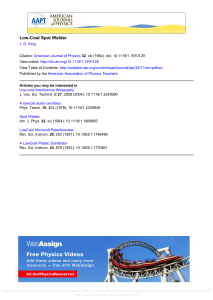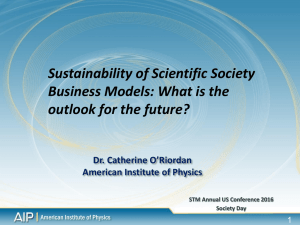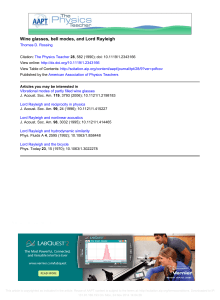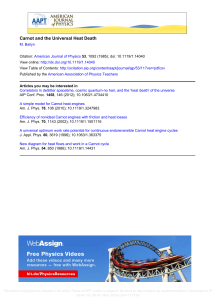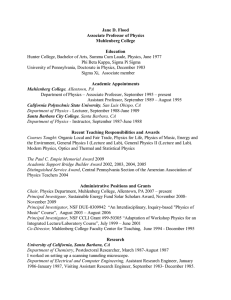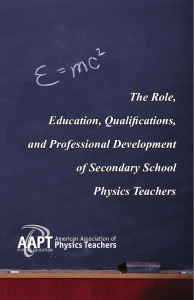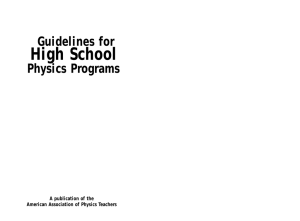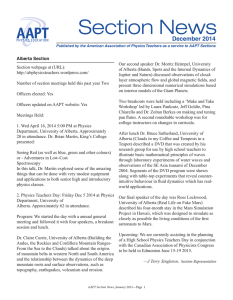Professional Development for High School Physics Teachers
advertisement
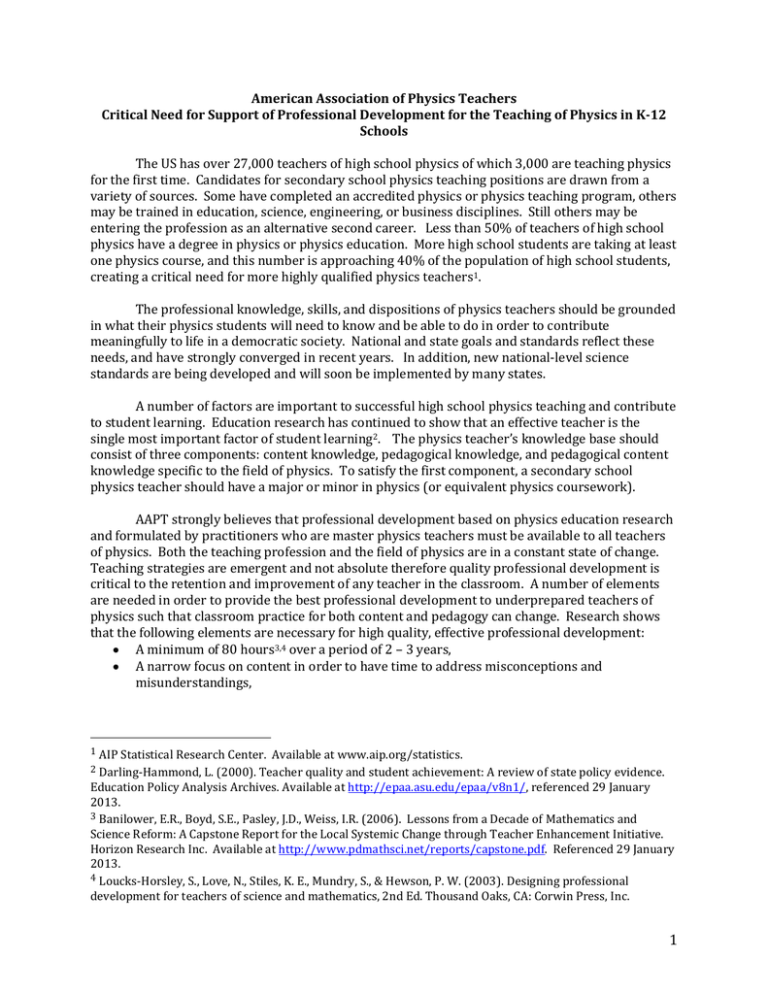
American Association of Physics Teachers Critical Need for Support of Professional Development for the Teaching of Physics in K-12 Schools The US has over 27,000 teachers of high school physics of which 3,000 are teaching physics for the first time. Candidates for secondary school physics teaching positions are drawn from a variety of sources. Some have completed an accredited physics or physics teaching program, others may be trained in education, science, engineering, or business disciplines. Still others may be entering the profession as an alternative second career. Less than 50% of teachers of high school physics have a degree in physics or physics education. More high school students are taking at least one physics course, and this number is approaching 40% of the population of high school students, creating a critical need for more highly qualified physics teachers1. The professional knowledge, skills, and dispositions of physics teachers should be grounded in what their physics students will need to know and be able to do in order to contribute meaningfully to life in a democratic society. National and state goals and standards reflect these needs, and have strongly converged in recent years. In addition, new national-level science standards are being developed and will soon be implemented by many states. A number of factors are important to successful high school physics teaching and contribute to student learning. Education research has continued to show that an effective teacher is the single most important factor of student learning2. The physics teacher’s knowledge base should consist of three components: content knowledge, pedagogical knowledge, and pedagogical content knowledge specific to the field of physics. To satisfy the first component, a secondary school physics teacher should have a major or minor in physics (or equivalent physics coursework). AAPT strongly believes that professional development based on physics education research and formulated by practitioners who are master physics teachers must be available to all teachers of physics. Both the teaching profession and the field of physics are in a constant state of change. Teaching strategies are emergent and not absolute therefore quality professional development is critical to the retention and improvement of any teacher in the classroom. A number of elements are needed in order to provide the best professional development to underprepared teachers of physics such that classroom practice for both content and pedagogy can change. Research shows that the following elements are necessary for high quality, effective professional development: A minimum of 80 hours3,4 over a period of 2 – 3 years, A narrow focus on content in order to have time to address misconceptions and misunderstandings, 1 AIP Statistical Research Center. Available at www.aip.org/statistics. Darling-Hammond, L. (2000). Teacher quality and student achievement: A review of state policy evidence. Education Policy Analysis Archives. Available at http://epaa.asu.edu/epaa/v8n1/, referenced 29 January 2013. 3 Banilower, E.R., Boyd, S.E., Pasley, J.D., Weiss, I.R. (2006). Lessons from a Decade of Mathematics and Science Reform: A Capstone Report for the Local Systemic Change through Teacher Enhancement Initiative. Horizon Research Inc. Available at http://www.pdmathsci.net/reports/capstone.pdf. Referenced 29 January 2013. 4 Loucks-Horsley, S., Love, N., Stiles, K. E., Mundry, S., & Hewson, P. W. (2003). Designing professional development for teachers of science and mathematics, 2nd Ed. Thousand Oaks, CA: Corwin Press, Inc. 2 1 An initial program that is 4-5 days in length with follow-up sessions spread over the course of several months (or years) to allow time for teachers to implement new strategies, modify as needed, and restructure their classroom practices, A professional development team consisting of peer teachers and a university professor, and Materials aligned with standards and based on information teachers need to teach their students. At the end of the professional development, teachers must feel confident in their content and practices to be most effective. After successfully gaining the background for teaching physics and beginning the teaching experience, it is essential that education be a continuing process – that being an expert physics teacher requires life-long learning. Teachers should be encouraged, and supported by their local administrators, to participate in peer collaboration discipline-specific professional development experiences. These experiences might occur within departments, within the school, within the district, within the community, or at the state or national level. Finally, adequate funding at the local, state, and national level must be available for professional development programs – to support those participating in the programs as well as practitioners involved in delivering the programs. The following constitutes ongoing professional development for teachers of physics to maintain their effectiveness in the classroom: Continuing education – further studies in both physics and teaching pedagogy including working towards an advanced degree. Active involvement in professional organizations such as local sharing groups, state science associations, and national science associations. Participation in workshops and institutes, particularly those that provide exposure to methodologies first hand and in collaboration with fellow teachers. Participating in real world applications of physics through summer research or work experience at universities, businesses, museums, national laboratories, etc. Having access to an experienced master teacher in physics for mentoring, preferably locally. Contributions to journals, web pages, listserves, and books on the teaching of physics. To address the needs of a strong STEM education in K-12 and the continuing professional development of physics teachers, we make these four recommendations: 1. Professional development should be based on the needs of physics teachers, grounded in education research, and led by peers/practitioners. 2. School districts should support professional development in content-specific areas for all teachers. 3. School districts should provide funding to support professional development for physics teachers and actively seek funding from state and/or federal sources in order to support teachers’ access to professional development opportunities. 4. Master teachers who are actively engaged in providing professional development to fellow teachers should be rewarded. Approved by the AAPT Executive Board on April 28, 2013 2


